You can call the New York Times' coverage of the war annoying, outrageous or unfair, but above all it is heartbreaking. Yet another reason why the hearts of Jews and Israelis have been broken again and again since October 7.
Israel is not understood these days. From inside it, it is also hard to comprehend the wave of hatred that arose amongst those we considered friends, all the way to the arrest warrants for Israeli leaders in The Hague. We remember exactly what happened here almost eight months ago, and know that the wave of hatred did not start with Israeli actions in Gaza. It started on the day of the horrific massacre and mass abduction, and since then our hearts have been broken a little more every day.
Last week, I published the huge gaps between the skyrocketing criticism directed at Israel in the New York Times in the first seven months of the war, and the low level of criticism directed at Hamas. There was also a mirror image: the raging empathy towards Palestinians versus the meager empathy towards Israelis, including the hostages.
This week will focus on the scope of coverage devoted to different aspects of the war, which also lacked logical proportionality. Sometimes, obsessive coverage of certain topics actually created a reality instead of reflecting the one which exists. For example: 172 headlines dealt with the humanitarian situation in Gaza, but not even one of them reported the violent looting of aid trucks by Hamas terrorists.
Aside from the overwhelming concern for Palestinians, which can somehow be understood, only 7 articles referred to the suffering of entire evacuated or destroyed communities in northern Israel. There is no doubt Palestinians suffer more, but does this justify such marginal coverage of Israeli distress, at a ratio of 1:24? Seven articles out of 1,398 do not allow an understanding of both sides in the conflict and what they are going through.
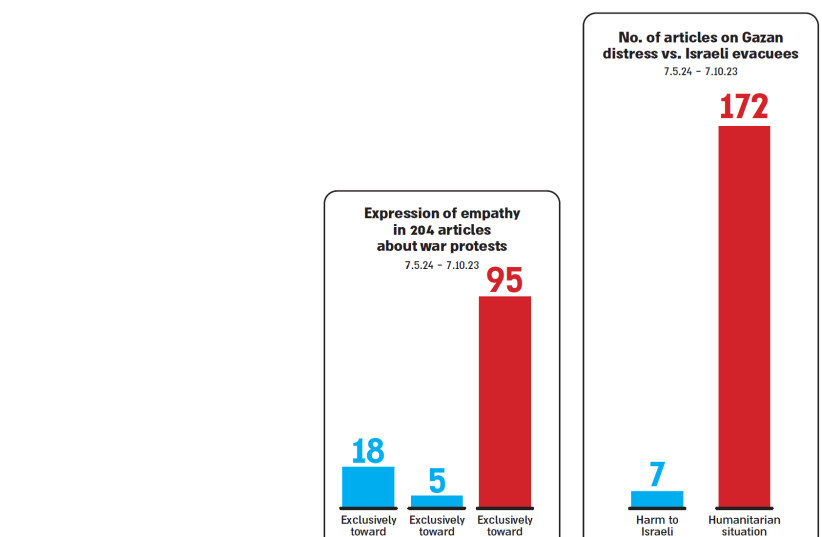
Apart from these 7 articles on damage, deaths and evacuees, bombardment and fighting in the north received a total of only 13 more articles, some of which were devoted to reporting on the Lebanese and Syrian side. The northern front hardly received any attention, although just this week, the number of bomb sirens in northern Israel exceeded the number in the south since October 7. That’s how topics that feature what Israelis have been experiencing were minimized.
Rape is not an opinion
The biggest disappointment from the Times coverage is on the issue of the barbaric rape that took place in Israel on the day of the massacre. For a moment it seemed different - on December 28, the Times published an extensive, well-founded and broad investigation into the brutal rape, most of whose victims were murdered. After shameful silence from the feminists of the world, suddenly these victims were given a voice that globalized some of the testimonies that shook Israeli society to its core.
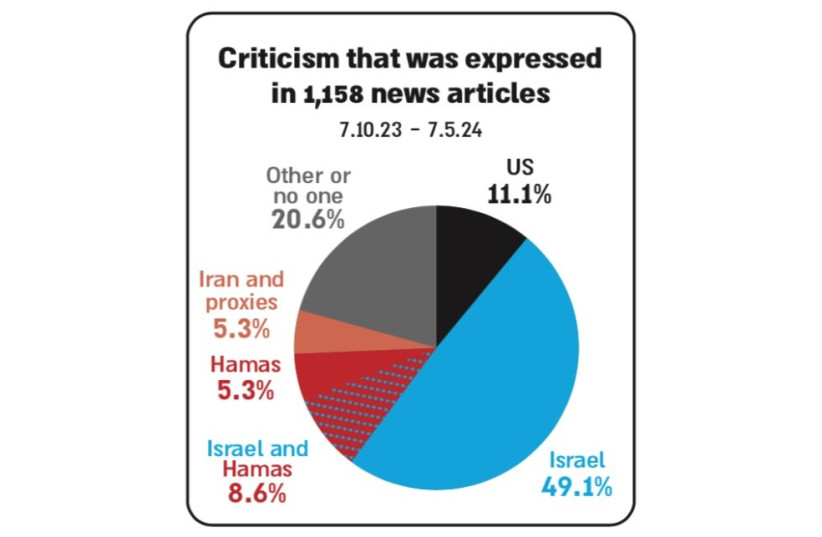
The Times was not the first to expose the rape cases, but it was the first to publish an in-depth investigation which echoed widely. The exposure was estimated at about 10 million readers, and 1,000 mentions in other media outlets. On the day of publication, editor-in-chief Joe Kahn sent an email to the entire newsroom praising the investigation as a "signature piece" of war coverage, and the team that carried it out "in a sensitive and detailed way" on a topic that is “highly politicized". His words turned out to be very true: it appears that for many in the newsroom rape is not a barbaric and reprehensible crime, but rather a political issue.
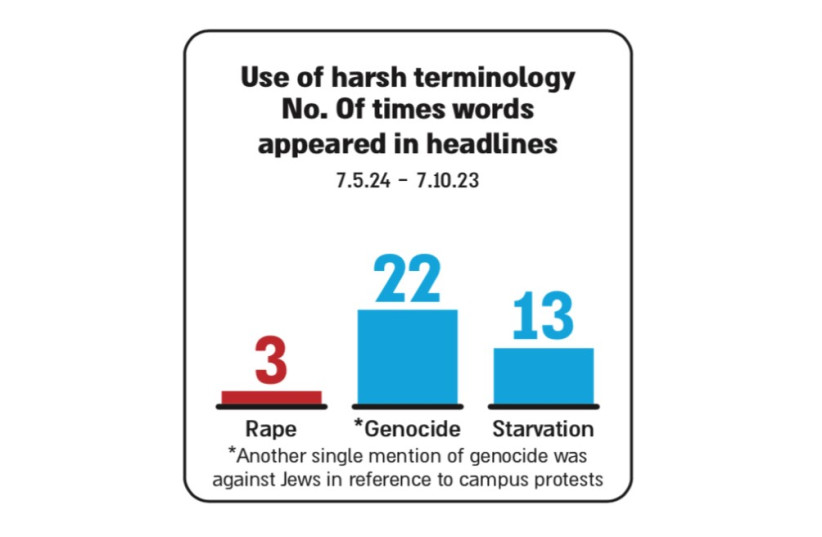
The rape issue appeared in only 7 of the Times' important headlines, despite being a central and traumatic event. 4 out of 7 were not reported but expressed in opinion pieces, 3 of which were written by Bret Stephens, the newspaper's sole pro-Israel writer. Even the launching of Sheryl Sandberg's documentary about the systemic Hamas rape was not reported as news but only in the context of an opinion piece, as if the rape cases are a pro-Israel opinion. In the news headlines, the rape issue appeared only twice: once in the courageous interview with former hostage Amit Soussana, and once in a headline about the UN report that confirmed the systemic rape and was published in early March.
The seventh time the issue appeared was not exactly coverage – it was an article that contradicted one of the testimonies in the original Times investigation. A soldier from a special unit testified that he saw the bodies of two girls who were raped in Kibbutz Beeri, but the new article reported that the kibbutz announced that the only two bodies of girls that were found in the same room after the massacre were not sexually violated. Beyond that, the chaotic day of October 7 was not mentioned, or that it is reasonable to assume that the stunned special unit soldier did not quite remember whether he saw the girls in Kibbutz Beeri or in Nahal Oz or another kibbutz, since he fought for dear life in several kibbutzes on that day and the bodies, as we know, were many.
Pleasing the Progressives
Strangely enough, the original rape investigation was not included in the Today's Headlines newsletters. Strange, because all the main headlines are included in these newsletters, certainly a headline that was prominently featured on the front page.
A possible explanation is that the attention the investigation received panicked the pro-Palestinian supporters. They feared it would damage their narrative, and began attacking the Times for merely publishing the investigation. Some journalists at the Times claimed "professional flaws" and leaked them to radical news sites that tried to undermine the journalistic work with an orchestrated digital lynching. Subsequently, progressive journalism professors were also recruited to appeal to the Times to re-examine the investigation, in an unprecedented step that has never been taken by journalism professors before for a single article. So why this one in particular?
The internal struggle in the Times newsroom regarding the sex crime investigation was covered by dozens of media outlets for months. It was accompanied by an internal probe to find the leakers, threats from the union claiming the probe was persecuting journalists of "Middle Eastern" descent, and ultimately the entire saga was quieted down and ended with nothing. The only injured party was the Israeli reporter who worked on the investigation - she was originally recruited to cover the sex crimes, but was fired after being exposed for "liking" a pro-Israeli tweet on October 7. Somehow, no one protested or thought her dismissal was due to persecution or outrageous.
Apparently, the Times understood that you can slam Israel without fear, but it's better to restrain stories of Hamas terrorists who raped Israeli women, because it's "highly political." The Israeli reporter who was fired was not replaced by someone else who took on the case.
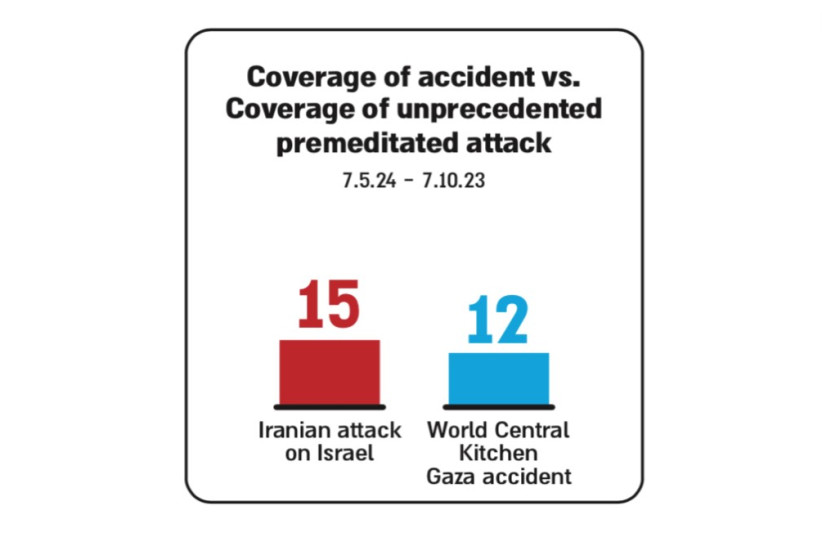
The original intention was to submit the investigation for the Pulitzer Prize, but in the end, seven other articles were submitted, six of which criticized Israel. We can only assume that the Times simply succumbed to the progressive onslaught - it didn’t want to jeopardize the prize given the criticism against the allegedly "political" investigation.
Instead of bravely submitting it and standing by the truth, the Times apparently chose to submit articles that would be more suitable for the venue where the prize is awarded - the school of journalism at Columbia University.
Downplaying the intense Iranian attack.
Here is an example of a single case that received the same level of coverage as the October 7 sex crimes: the shooting of three students of Palestinian descent in Vermont. Although it was a single case which was not even a clear hate crime specifically against Palestinians, it was covered from every possible angle. Neighbors and relatives were interviewed, every development in the investigation was closely monitored, and all in the context of the most important headlines of the day.
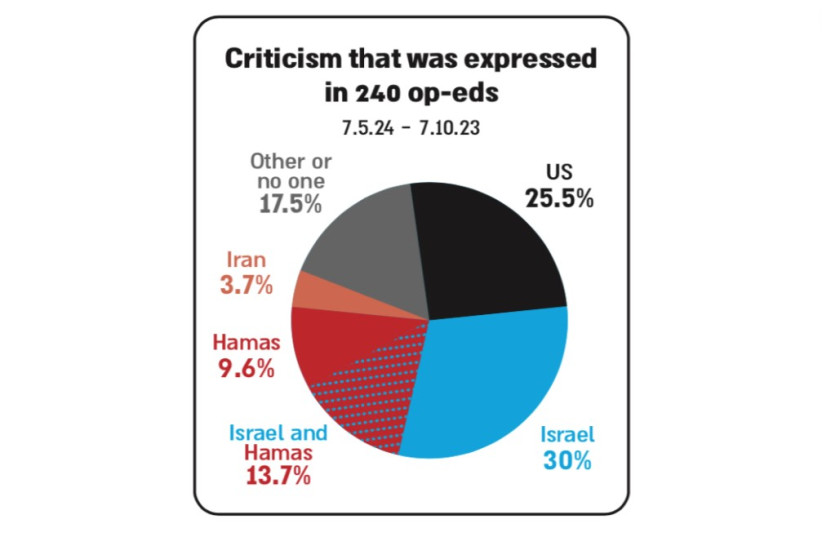
The Times tries to avoid the use of loaded or harsh words, but here too there are exceptions. The word "rape" appeared in only 3 headlines out of 1,398 since the beginning of the war, but the word "genocide" appeared 22 times in the context of Israel (and once more in the context of Jews at campus protests). The word "starvation" appeared 13 times in headlines and the word "famine" appeared 17 more times. The thing is, the rape actually did happen, while starvation and genocide are unfounded accusations. So why aren't they defined as political?
Of all the collective traumas we experienced as Israelis, the way the Iranian attack on April 14 was reported was the most heartbreaking of all. This overwhelming event was covered with 15 headlines, but only 3 of them described the attack itself, and they were phrased laconically as if it was merely a mundane audiovisual show. None of them mentioned the number of ballistic missiles and UAV’s, and none reflected the drama that plunged an entire country into dystopian anxiety.
The remaining headlines dealt with with the subject with a cold, military, political or global analysis, with a balance of "both sides", and recommendations regarding the restrained way in which Israel should or should not respond. The only empathetic headline referred to a 7-year-old girl from the Bedouin community who was physically injured in the attack. Five more headlines were devoted to describing the Israeli retaliation.
Just for comparison - 12 dramatic and loaded headlines were devoted to the unfortunate case of shooting the World Central Kitchen aid convoy, some of which reprimanded Israel as if it was done intentionally. But hundreds of ballistic missiles and UAV’s in an unprecedented attack by a country whose intention is to annihilate Israel, elicited far less emotion or graphic descriptions, and required roughly the same level of coverage, according to the editors.
The news is more biased than the opinions
Surprisingly, the bias in the opinion articles was significantly less severe than the bias in the news reports. Out of 240 opinion pieces selected as part of the most important headlines during the war, 72 exclusively criticized Israel (30% of the articles) and 23 exclusively criticized Hamas (9.6%). But out of 1,158 articles that are not supposed to constitute opinion but rather balanced reporting, 49.1% were exclusively critical of Israel, while critical reports of Hamas reached only 5.3%.
Criticism of Iran, Hamas, Hezbollah and the Houthis combined appeared in only 10.6% of the news reports. Qatar, by the way, which donated billions to elite universities, was mentioned with a critical tone in only one headline out of 204 headlines dealing with campus protests. And amazingly enough, there was not a single opinion piece in the Times during the war that criticized Hezbollah.
On a personal note, it's heartbreaking not only as an Israeli, but also as a journalist. Because when the New York Times practices journalism like this, it sets the tone for journalism as a whole. It legitimizes the propaganda industry that is only disguised as journalism, also known as "opinion journalism". It isn’t good for Israel, but it is also very bad for democracy.
The bottom line is that Israel received rampant and disproportionate criticism, probably intensified by its current extremist government. But that doesn’t explain why Hamas and Iran received very limited criticism. Something about these reporting proportions is distorted and dangerous not only for Israel, but for American values. It's easy to see that the subtext aligns with the lack of proportionality at elite universities, in the media, and now also in The Hague.
Methodology
The war articles were collected daily from the New York Times newsletter called Today's Headlines, which aggregates the most important headlines of the passing day (about 50 per day). A total of 1,398 articles were collected from 10/7/23 to 5/7/24. Each article was coded by two criteria: was empathy toward an individual or group expressed in the headline, and was criticism toward a particular person or entity expressed. Articles in which no criticism or empathy was expressed were coded as 0.
The Times’ comment
In regard to this study, a spokesperson for the Times said that “It’s moments like this when our independent reporting matters most. The New York Times has invested more than any other US newspaper to help readers understand the complexities of the Israeli–Palestinian conflict over the past decade and we have some of the world’s most experienced reporters, photographers and analysts on the ground to ensure our reporting of the Oct. 7 terrorist attack in Israel and the ongoing Israel-Gaza war is nuanced, steeped in context and expertise.
Regarding the Dec. 28 investigation, we're confident in the accuracy of our reporting and are continuing to report on the issue of sexual violence during this conflict.”
